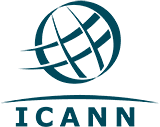Digital Ecosystem
The digital ecosystem refers to the set of interactions and relationships among individuals, organizations, devices, and services in the digital environment. It's a concept that describes how all these parts connect, interact, and influence each other in the digital world. In the digital ecosystem, people interact through various digital channels and platforms, such as social networks, mobile applications, websites, email, and instant messaging. These interactions can include communication, collaboration, e-commerce, information sharing, and content sharing, among others. Organizations are also part of the digital ecosystem. They can be businesses, institutions, governments, or other entities that use technology and digital media for their operations and activities. These organizations can offer products, services, information, or entertainment through their digital platforms. Electronic devices play a crucial role in the digital ecosystem. Smartphones, tablets, computers, and other Internet-connected devices enable people to access and participate in the digital environment. These devices can also interact with each other, as in the case of the Internet of Things (IoT), where everyday objects are connected to the network to collect and share data. Digital services are also essential components of the ecosystem. These services include search engines, social media platforms, cloud storage services, music and video streaming services, food delivery services, online banking services, among many others. These services provide specific functionalities and experiences to users within the digital ecosystem. The digital ecosystem is constantly evolving and is influenced by technological advancements, changes in people's behavior, and decisions made by organizations. It is also subject to government regulations and policies that aim to ensure privacy, security, and fairness in the digital environment. In summary, the digital ecosystem refers to the interconnected set of people, organizations, devices, and services that interact in the digital environment. It is a space of constant change and growth, driven by technology and the needs of society in the digital era.
Read More









